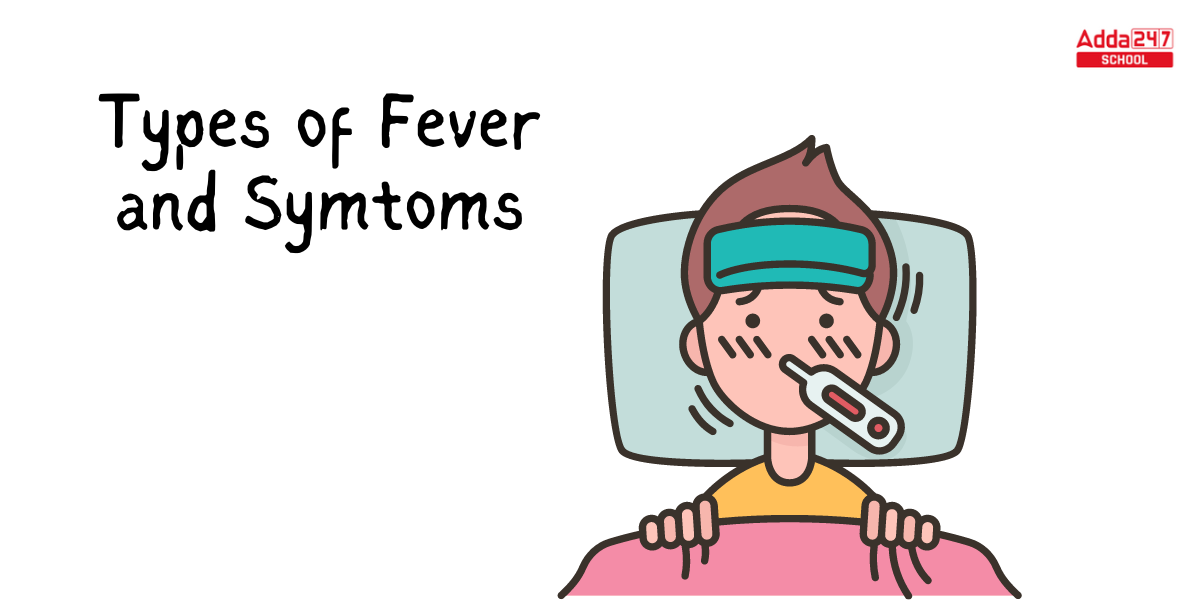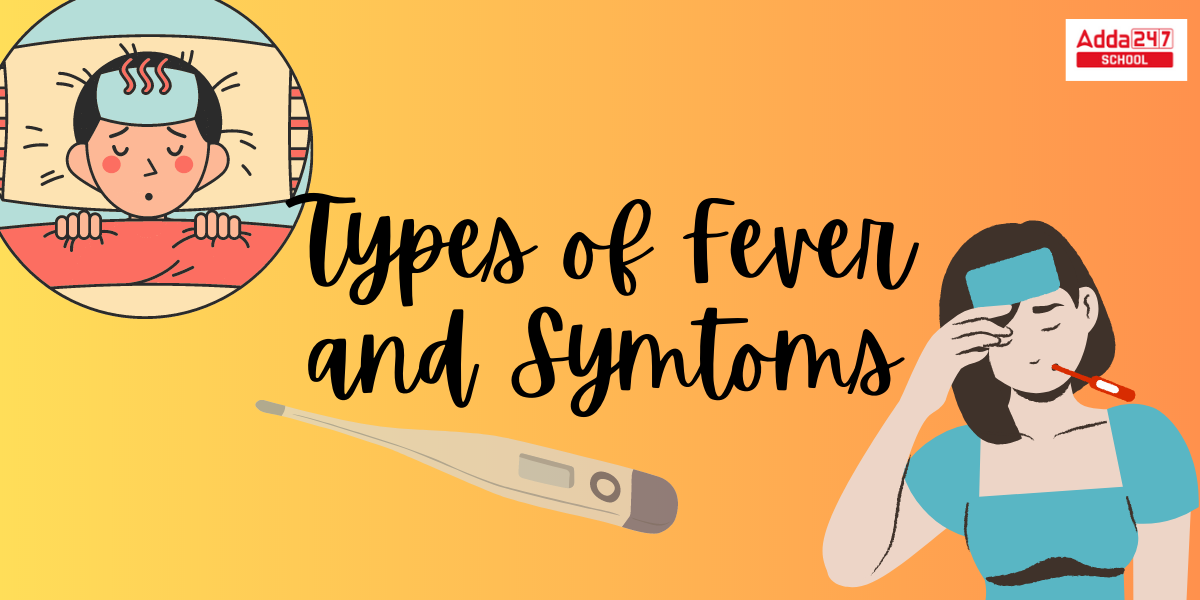There is no one who has not experienced fever at some point in their lifespan. It is one of the most prevalent health problems that people face different types of fever on a regular basis. Fever. Fever also known as pyrexia, is described as having a temperature that is higher than normal. It is medically defined as a condition in which the body temperature increases over the standard levels of 98-99° Fahrenheit or 36-37° Celsius, also known as managed hyperthermia. Fevers rarely reach temperatures beyond 41 to 42 °C (106 to 108 °F). Overexposure to sunlight, dehydration as well viral or bacterial infections, heat exhaustion, or inflammatory disorders such as rheumatoid arthritis are common causes of fever or increased body temperature. Check What are the 12 Types of Fever in details in this post.
Types of Fever
Several types of Fever are commonly recognized as a potential warning that something strange is going on in the human body, and it can cause symptoms such as shivering, loss of appetite, drowsiness, and sweating. There is no single agreed-upon upper limit for normal temperature in humans, with sources citing ranges ranging from 37.2 to 38.3 °C (99.0 to 100.9 °F). greater set point generates greater muscular contractions and a feeling of coldness or shivers. This leads to increased heat output and heat conservation efforts. When the set point temperature recovers to normal, a person feels hot, flushed, and may start sweating. Fever seldom causes a febrile seizure, which is more common in young children.
Fever Types
In general, fever occurs when the immune system generates extra white blood cells to combat an infection; the additional white blood cells activate the brain, causing the body to heat up and cause fever. There are numerous sorts of fever that can make people’s lives difficult.
- A low-grade fever occurs when the body temperature increases above 100.4 degrees Fahrenheit (38 degrees Celsius).
- If your temperature increases above 102.2-104F (39.1-40C), you have a moderate fever.
- If your body temperature is 104F (39.4C) or higher, you have a high-grade fever.
- Hyperpyrexia occurs when the temperature rises above 106°F (41.1°C).

Different Types of Fever
Most fevers subside on their own within one to three days. Persistent or continuous fever, on the other hand, might begin or repeat for up to 14 days. Fever in adults can be caused by a viral illness (flu or a cold), a bacterial infection, a fungal infection, food poisoning, heat exhaustion, sunburn, inflammation, or a tumor.
- If the fever lasts fewer than 7 days, it is considered acute.
- If the fever lasts more than 14 days, it is classified as subacute.
- If the fever lasts more than 14 days, it is considered chronic or persistent.
- A persistent fever, even if mild, can be dangerous, as recurrent fever is a symptom of a more serious infection or health condition.
What are the 12 Types of Fever
Fever is a temporary increase in body temperature that can be caused by various factors, including infections, inflammatory conditions, and other medical issues. However, we can discuss some common categories or causes of fever:
- Infectious Fever: Fevers caused by infections, such as viral, bacterial, fungal, or parasitic infections.
- Inflammatory Fever: Fever as a result of inflammatory conditions, like rheumatoid arthritis or inflammatory bowel disease.
- Autoimmune Fever: Some autoimmune diseases, like systemic lupus erythematosus, can cause recurrent or persistent fevers.
- Drug-Induced Fever: Certain medications can lead to fever as an adverse reaction.
- Neoplastic Fever: Fevers associated with cancer, often due to the immune response to tumor growth.
- Environmental Fever: Exposure to extreme temperatures, such as heat stroke or hypothermia, can cause fever.
- Hereditary Fever Syndromes: Some rare genetic disorders, like Familial Mediterranean Fever, can cause recurrent fevers.
- Fever of Unknown Origin (FUO): When the cause of a fever cannot be determined despite extensive diagnostic tests, it’s categorized as FUO.
- Postoperative Fever: Fever that occurs after surgery, often due to the body’s natural response to tissue trauma and infection risk.
- Fever in Children: Fevers in children can be categorized based on the underlying cause, such as viral, bacterial, or teething-related fevers.
- Travel-Related Fever: Fevers that develop after travel to specific regions can be linked to tropical diseases like malaria or dengue.
- Pel-Ebstein Fever: A specific pattern of fever seen in some cases of Hodgkin’s lymphoma, characterized by recurring high fevers followed by periods of normal temperature.
It’s important to note that fever is a symptom and not a disease itself. Understanding the underlying cause of the fever is crucial for appropriate diagnosis and treatment. If you or someone you know is experiencing a fever, it’s important to consult a healthcare professional for a proper evaluation and diagnosis.
Symptoms of Fever
Different types of fever and symptoms are mentioned here.
Acute Fever
Acute fever of this kind is frequently a symptom of an infection or another underlying medical issue. Acute fever is described as a quick and short-term increase in body temperature that is greater than 100.4°F (38°C). It is a typical symptom of numerous infections, including the flu, the common cold, and pneumonia. Acute fevers typically develop quickly and linger for a few days to a few weeks.
Recurrent Fever
Recurrent fever refers to fever bouts that occur at regular intervals or in a predictable pattern. It is a sort of intermittent fever that can linger anywhere from a few days to many weeks before going away. Recurrent fever can be caused by a variety of illnesses, including tuberculosis, Lyme disease, periodic fever, aphthous stomatitis, pharyngitis, and adenitis (PFAPA) syndrome.
Intermittent Fever
Intermittent fever is a condition in which the body temperature remains constant at 37° C during the day but rises at night. This form of fever, according to medical specialists, is often caused by parasite or bacterial illnesses, with malaria and septicemia being classic examples. It is further classified into three types: quotidian fever, tertian fever, and quartan fever.
Chronic Fever
Chronic fever is defined as a sustained increase in body temperature that lasts more than three weeks. It is a symptom of underlying health disorders such as tuberculosis or HIV, autoimmune diseases, or malignancies and necessitates a complete medical examination. Prompt and correct diagnosis is critical for addressing the underlying cause and avoiding consequences.
Remittent Fever
Remittent fever is distinguished by temperature swings that fluctuate between periods of elevation and normal values. Temperature fluctuations can occur over the course of a day or a few days, with the fever temporarily dropping to normal levels before climbing again. This temperature change pattern differs from the steady increase found in other types of fevers. Remittent fever is common in infections including bacterial or parasite infections, as well as several autoimmune illnesses and malignancies.
Rheumatoid Arthritis
Streptococcal bacteria cause rheumatic fever. According to medical professionals, the bacteria produces a throat infection, which can develop into a severe fever if left untreated. Rheumatic fever symptoms include white patches on the tonsils and tongue, inflammation accompanying headache, and so on. In addition to the illnesses listed above, reports from India have revealed incidences of Pel-Ebstein fever, Neutropenic fever, and Hyperpyrexia.
Hyperpyrexia
A high fever, defined as a body temperature of more than 106°F (41.1°C), is referred to as hyperpyrexia. It may indicate a dangerous underlying medical problem, such as severe diabetes. It can be an indication of a significant underlying medical problem, such as a serious infection or heat stroke, and necessitates immediate medical attention. Furthermore, hyperpyrexia can be harmful, resulting in dehydration and organ damage.
Low Grade Fever
The low-grade fever is characterized by a modest rise in body temperature, usually between 100.4°F (38°C) and 102°F (38.9°C). It is a modest increase in body temperature that is a frequent symptom of many illnesses, such as the flu or a cold. Low-grade fevers are frequently accompanied by additional symptoms such as a headache, muscle aches, or weariness and usually resolve on their own within a few days to a week.
Septic Fever
Septic fever, also known as sepsis, is a serious bacterial infection that can result in a high fever as well as a widespread inflammatory reaction in the body. If not treated promptly with antibiotics and supportive care, it can be fatal. High temperature, chills, rapid heartbeat, low blood pressure, and confusion are all possible symptoms.
Types of Pyrexia
Pyrexia, commonly known as fever, is a condition characterized by an elevated body temperature above the normal range, which is typically around 98.6°F (37°C). Fevers can be categorized based on their duration, underlying cause, and other characteristics. Here are some types of pyrexia:
- Low-Grade Fever: This type of fever is characterized by a body temperature slightly above the normal range, typically between 100.4°F (38°C) and 101.3°F (38.5°C).
- Intermittent Fever: An intermittent fever is one that comes and goes at regular intervals. It may spike and then return to normal, repeating over time. This type of fever is often associated with conditions like malaria.
- Remittent Fever: Remittent fever is a type of fever where the body temperature fluctuates, but it never returns to the normal range. The fluctuations can be significant within a 24-hour period.
- Continuous Fever: In continuous fever, there are minimal fluctuations in temperature over a 24-hour period, but the fever is present all the time.
- Hectic Fever: Hectic fever is characterized by fluctuating temperatures with regular, significant spikes and drops. It is often associated with severe infections and conditions like sepsis.
- Pel-Ebstein Fever: This is a rare type of fever characterized by recurrent episodes of fever that last for several days followed by an afebrile (normal body temperature) period that lasts an equal amount of time.
- Steady Fever: In a steady fever, the temperature remains elevated but stable without significant fluctuations.
- Hyperpyrexia: Hyperpyrexia is an extremely high fever, typically with a body temperature exceeding 106°F (41.1°C). This is a severe medical emergency that requires immediate attention.
- Febrile Seizures: Febrile seizures occur in young children when they experience a rapid rise in body temperature. These seizures are generally benign but can be frightening for parents.
- Hereditary Periodic Fever Syndromes: These are rare genetic disorders that cause recurrent episodes of fever, often accompanied by other symptoms. Examples include Familial Mediterranean Fever (FMF) and TRAPS (Tumor Necrosis Factor Receptor-Associated Periodic Syndrome).
- Drug-Induced Fever: Some medications can cause a fever as a side effect. This is typically a low-grade fever and goes away once the medication is discontinued.
- Fever of Unknown Origin (FUO): FUO is a condition in which a person has a persistent fever, but its underlying cause remains undiagnosed after a comprehensive evaluation.
The type of fever and its underlying cause can vary significantly. It’s important to identify the cause of a fever, as it can be a symptom of various medical conditions, including infections, inflammatory disorders, malignancies, and more. If you or someone you know has a fever, it’s advisable to seek medical attention to determine the underlying cause and appropriate treatment.
| Related posts | |
| Types of Angles | Types of Triangles |
| Types of Motion | Types of Bank |
| Types of Teeth | |









 CBSE Admit Card 2026 for Private & R...
CBSE Admit Card 2026 for Private & R...
 AILET 2026 AIR 1: Check Full Toppers Lis...
AILET 2026 AIR 1: Check Full Toppers Lis...
 AILET Result 2026 OUT, How to Download S...
AILET Result 2026 OUT, How to Download S...














